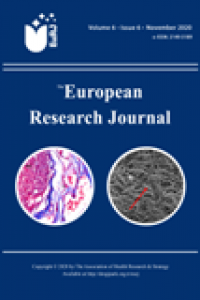Abstract
References
- 1. Paro-Panjan D, Neubauer D. Congenital hypotonia: is there an algorithm? Child Neurol 2004;19:439-42.
- 2. Thompson CE. Benign congenital hypotonia is not a diagnosis. Dev Med Child Neurol 2002;44:283-6.
- 3. Birdi K, Prasad AN, Prasad C, Chodirker B, Chudley AE. The floppy infant: retrospective analysis of clinical experience (1990–2000) in a tertiary care facility. J Child Neurol 2005;20:803-8.
- 4. Crawford TO.Clinical evaluation of the floppy infant. Pediatr Ann 1992;21:348-54.
- 5. Bergen BJ.Evaluation of the hypotonic or floppy infant. Minn Med 1985;68:341-7.
- 6. Prasad AN, Parasad C. Genetic evaluation of the floppy infant.Semin Fetal Neonatal Med 2011;16:99-108.
- 7. Richer LP, Shevell MI, Miller SP. Diagnostic profile of neonatal hypotonia: an 11-year study. Pediatr Neurol 2001;25:32-7.
- 8. McIntosh GC, Olshan AF, Baird PA. Paternal age and the risk of birth defects in offspring. Epidemiology 1995;6:282-8.
- 9. Mullaney P, Vajsar J, Smith R, Buncic JR. The natural history and ophthalmic involvement in childhood myasthenia gravis at the hospital for Sick Children. Ophthalmology 2000;107:504-10.
- 10. Bodensteiner JB, Byler DL, Jaynes ME. The utility of the determination of CTG trinucleotide repeat length in hypotonic infants. Semin Pediatr Neurol 1999;6:243-6.
- 11. David WS, Jones HR Jr. Electromyography and biopsy correlation with suggested protocol for evaluation of the floppy infant. Muscle Nerve 1994;17:424-30.
- 12. Aydinli N, Baslo B, Caliskan M, Ertas M, Ozmen M. Muscle ultrasonography and electromyography correlation for evaluation of floppy infants. Brain Dev 2003;25:22-4.
Abstract
Objectives: To describe the clinical, metabolic and genetic characteristics of the floppy infants diagnosed at a tertiary care center.
Methods: A retrospective analysis was performed on the medical files of 90 floppy infants diagnosed in the pediatric metabolism department of our tertiary care center. Baseline descriptives, prenatal and perinatal data, results of genetic and metabolic tests as well as neuroradiological imaging findings were overviewed.
Results: Our series was comprised of 42 (46.7%) females and 48 (53.3%) males. Consanguineous marriages were detected in 60 (66.7%) cases. There was no history of prenatal comorbidity or birth-related trauma or infections. Gestational age was ≥ 37 weeks in 78 (87%) infants. The average body weight was 2521.2 ± 839.4 grams (range: 1510-4300). The average height and head circumference were 48.9 ± 0.9 cm and 33.9 ± 0.7 cm, respectively. The etiology of hypotonia was found to be central in 89 (98.8%) infants. The most frequent diseases diagnosed were vitamin B12 deficiency (14.4%), dystrophinopathy (7.7%), spinal muscular atrophy (5.5%), gangliosidosis (3.3%), peroxisomal disease (3.3%), Pompe disease (3.3%), and Zellweger disease (3.3%).
Conclusions: The floppy infant still constitutes a diagnostic challenge in spite of the technological advances in genetic, molecular and metabolic test methods. The priority and selection of diagnostic measures need to be determined on an individualized basis, and multidisciplinary and collaborative work is mandatory to set the diagnosis cost-effectively without delay. An algorithm based and individualized approach may provide a high diagnostic yield for the clinician.
Keywords
References
- 1. Paro-Panjan D, Neubauer D. Congenital hypotonia: is there an algorithm? Child Neurol 2004;19:439-42.
- 2. Thompson CE. Benign congenital hypotonia is not a diagnosis. Dev Med Child Neurol 2002;44:283-6.
- 3. Birdi K, Prasad AN, Prasad C, Chodirker B, Chudley AE. The floppy infant: retrospective analysis of clinical experience (1990–2000) in a tertiary care facility. J Child Neurol 2005;20:803-8.
- 4. Crawford TO.Clinical evaluation of the floppy infant. Pediatr Ann 1992;21:348-54.
- 5. Bergen BJ.Evaluation of the hypotonic or floppy infant. Minn Med 1985;68:341-7.
- 6. Prasad AN, Parasad C. Genetic evaluation of the floppy infant.Semin Fetal Neonatal Med 2011;16:99-108.
- 7. Richer LP, Shevell MI, Miller SP. Diagnostic profile of neonatal hypotonia: an 11-year study. Pediatr Neurol 2001;25:32-7.
- 8. McIntosh GC, Olshan AF, Baird PA. Paternal age and the risk of birth defects in offspring. Epidemiology 1995;6:282-8.
- 9. Mullaney P, Vajsar J, Smith R, Buncic JR. The natural history and ophthalmic involvement in childhood myasthenia gravis at the hospital for Sick Children. Ophthalmology 2000;107:504-10.
- 10. Bodensteiner JB, Byler DL, Jaynes ME. The utility of the determination of CTG trinucleotide repeat length in hypotonic infants. Semin Pediatr Neurol 1999;6:243-6.
- 11. David WS, Jones HR Jr. Electromyography and biopsy correlation with suggested protocol for evaluation of the floppy infant. Muscle Nerve 1994;17:424-30.
- 12. Aydinli N, Baslo B, Caliskan M, Ertas M, Ozmen M. Muscle ultrasonography and electromyography correlation for evaluation of floppy infants. Brain Dev 2003;25:22-4.
Details
| Primary Language | English |
|---|---|
| Subjects | Paediatrics |
| Journal Section | Original Articles |
| Authors | |
| Publication Date | November 4, 2020 |
| Submission Date | May 7, 2019 |
| Acceptance Date | August 20, 2019 |
| Published in Issue | Year 2020 Volume: 6 Issue: 6 |



